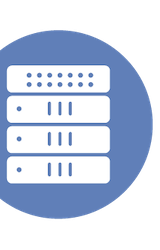Stephen Foskett breaks down a big acquisition in the storage market, the reborn Violin Systems acquiring X-IO. This gets complicated as Violin is buying X-IO’s legacy ISE storage line, while their edge Axellio product is being spun out into a new company. Stephen sees this as a win for both remaining companies.
NetApp Insight 2018 – Hello Stranger, We Meet Again
Max Mortillaro is coming to Tech Field Day Extra at NetApp Insight 2018. He’s hoping to reconnect with a company he’s hasn’t directly worked with. On the eve of 2019, he thinks the company’s transformation is more than just PR, and seems to represent substantive change. He’s excited to get more details during the Tech Field Day Extra presentations.
ScaleIO Becomes Software Defined on Hardware
Chris Evans got to see a bit from Dell EMC’s ScaleIO division last year. But the company has decided to shake up the offering by taking the former software product, and tying it directly to VxRack hardware. This comes after a reorganization for the company, that seems to show them focusing more strictly on hardware sales.
Swordfish – A Standard by Any Other Name Would Smell As Sweet
Alex Galbraith hear from SNIA last year at Storage Field Day, and takes a look at the Swordfish. This defines the standards for APIs used by storage devices to make sure they’re consistent. Alex doesn’t think this will displace more proprietary approaches overnight, but if developed in parallel, may become a widely used standard. Plus, the project is designed to quickly ratify requirements when added by a few vendors, which should keep it relevant going forward.
Has NVMe Killed off NVDIMM?
Chris Evans looks at the impact here of NVMe on the nascent NVDIMM market. Without needing to reorganize architectures and with OS support already in place, Chris sees NVMe has having a number of advantages. He still sees a place for NVDIMMs in the data center, but perhaps its place is much smaller than previously assumed.
Primary Data – Seeing the Future
As 2017 comes to a close, there’s the inevitable glut of predictions as to what’s in store for the next year. IT is no exception to this, and Dan Frith entertains some from Primary Data. Dan saw the company present at Storage Field Day earlier this year, and looks at their predictions for what 2018 will bring for software-defined storage and HCI.
X-IO Announces ISE 900 Series G4
X-IO released their ISE 900 Series G4, an upgraded all-flash array. The new product packages in ISE hardware and software features, an now adds individual hot-swappable drives and Performance-Optimized Deduplication. Dan Frith finds it a compelling product, and appreciates X-IO positioning it as offering a feature rich AFA for a good price.
Have Axellio Edge, Will Travel
Dan Frith gives a look at X-IO’s Portable Axellio Edge Computing System, which is designed to allow for easily transferring edge computing data via a luggable form factor. This separates compute resources into a large hard case for checking on a flight, with NVMe drives in a smaller carry-on case. It may not be the easiest way to travel, but sometimes using old fashioned sneakernet is the most secure way to move your data.
#SFD13 and X-IO
At Storage Field Day, Matt Leib got reacquainted with X-IO. He was a fan of the company since they were a pioneer in the early days of all-flash arrays. At the event, Matt saw details of their Axellio edge computing platform. The post reviews why the platform isn’t so much designed for Big Data, but rather “Big Fast Data”.
X-IO Axellio and Edge Computing: an NVMe-enabled emerging architecture model?
Max Mortillaro follows up on his preview post about X-IO’s Axellio Edge computing platform. Max clarifies that this is meant to be an OEM solution designed to be a standalone application platform. He likes the ability to use 72 dual-port NVMe SSD drives, but the real secret sauce is the extra I/O via PCIe. It makes Max think that maybe the concept of edge computing requires a fundamentally new platform, one that Axellio exemplifies.
Cloudified Snapshots done two ways
Mark May shares his thoughts on what he saw from Dell EMC at Storage Field Day in June. He particularly focuses on their Unity storage array and how it integrates with their Cloud Tier appliance. This allows for moving data from the storage array into the public cloud. Mark really likes the ability to take snapshots of Unity, but writing the data to S3 storage.
He compares this to Pure Storage’s approach, which he saw at a Storage Field Day Exclusive event at Pure Accelerate. Pure allows you to write snapshots to AWS in its native format, as opposed to converting it to an object store. Both are interesting approaches to extending storage arrays into the cloud.
The concept of “Scale In” for high volume data
Returning from Storage Field Day, Mike Preston talks about “scaling in” as opposed to out or up in relation to X-IO Storage’s new product, Axellio. He says, “Axellio is basically an OEM box… targeted at companies and enterprises that need a mass amount of computing and storage performance requirements in order to solve specific problems.” Mike believe that X-IO are on to something, but are still learning exactly how to bring this product to the market.
Is there still a need for specialized administrators?
Mike Preston asks the question, “is the storage admin dead?” in response to Andy Banta’s NetApp SolidFire presentation at Storage Field Day. He talks storage provisioning and performance as well as quality of service before praising NetApp SolidFire for having “taken some very difficult and complex tasks and turned them into a simple policy.”
X-IO Technologies Axellio At SFD13
Brandon Graves gives some background on X-IO’s founding and company history before discussing their new, unique, and specialized storage solution, Axellio. He goes into the hardware specifics, architecture, and performance of Axellio, then provides his own opinion saying X-IO “are one of the few companies that are doing something different when all the storage products are starting to look the same.”
Long Term Data Retention – What do I do?
Prompted by StorageCraft’s presentation at Storage Field Day, Alex Galbraith answers questions about long term data retention. This includes describing what the regulatory requirements are for long-term data retention as well as the consequences of losing said data. He also discusses StorageCraft’s latest backup software iteration which includes a local cache with cloud integration and the added ability to spin up a disaster recovery environment in the event of an outage to your primary data center.
Does Cloud Provide Infinite Storage Capacity and Retention?
Based on Dell EMC’s presentation on Unity at Storage Field Day, Alex Galbraith poses the question: “Does Cloud Provide Infinite Storage Capacity and Retention?”
Primary Data Attacks Application Ignorance
At Primary Data’s Storage Field Day presentation, they brought up the idea that applications are “unaware”. This ignorance is to the underlying infrastructure, as they are not generally written with a specific set of hardware or specification in mind. Dan Frith shares his thoughts on their solution to this problem, DataSphere, “a metadata engine that automates the flow of data across the enterprise infrastructure and the cloud to meet evolving application demands”.
Storage Field Day 13 – Wrap-up and Link-o-rama
Dan Frith finishes up his coverage of Storage Field Day and the Storage Field Day Exclusive at Pure Accelerate. This includes links to all his coverage, other delegates, and his closing thoughts on the events.
StorageCraft Are In Your Data Centre And In The Cloud
At StorageCraft’s Storage Field Day presentation, Dan Frith was reminded of why he’s liked using their solutions in the past. The world of DRaaS, offers a “terribly simple” way to get it up and running. And when disaster does strike, the ability to immediately use their cloud as a failover means you don’t lose a lot of time in recovery either.
SNIA’s Swordfish Is Better Than The Film
At Storage Field Day, SNIA presented on their Swordfish, their scalable storage management standard. With the way that storage has radically changed in the data center over the last fifteen years, Dan think that projects like Swordfish demonstrate just how vital SNIA has become in the industry.







